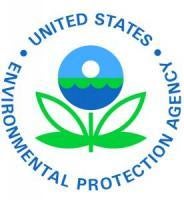Continuing the Obama Administration’s commitment to taking action on climate change and protecting public health, the U.S. Environmental Protection Agency (EPA) is taking steps to further reduce emissions of methane-rich gas from municipal solid waste (MSW) landfills. Under today’s final rules, new, modified and existing landfills will begin capturing and controlling landfill gas emissions at levels that are one-third lower than current requirements, updating 20-year-old standards for existing landfills.
Combined, the final rules are expected to reduce methane emissions by an estimated 334,000 tons a year beginning in 2025 – equivalent to reducing 8.2 million metric tons of carbon dioxide. EPA estimates the climate benefits of the combined rules at $512 million in 2025 or more than $8 for every dollar spent to comply.
Methane is a potent greenhouse gas with a global warming potential more than 25 times that of carbon dioxide. Climate change impacts threaten our health—by exposing us to extreme heat waves, degraded air quality, and diseases spread though food, water, and insects—and they threaten our economy—by increasing insurance premiums and food prices, and damaging our infrastructure and ecosystems. The most vulnerable among us—including children, older adults, people with preexisting medical conditions, and people living in poverty—are most at risk from the impacts of climate change.
Municipal solid waste landfills receive non-hazardous waste from homes, businesses and institutions. As landfill waste decomposes, it produces a number of pollutants, including air toxics, volatile organic compounds, carbon dioxide, and methane. MSW landfills are the second-largest industrial source of methane emissions in the United States, accounting for 20 percent of methane emissions in 2014. Methane from landfills can be cost-effectively captured and used in place of other fossil fuels.
The final rules took into account public comments and additional data and analysis received since the agency issued the proposals in July 2014 and August 2015. Today’s actions update the 1996 guidelines for existing landfills and strengthen the previously proposed rule for new landfills issued in 2014.
In addition, EPA’s Landfill Methane Outreach Program provides landfill owners and operators a suite of tools and technical resources to facilitate development of landfill gas energy projects. Over the last 20 years, LMOP-assisted projects have reduced and avoided more than 345 million metric tons of carbon dioxide equivalent.
Today’s actions are another step toward implementing President Obama’s Climate Action Plan: Strategy to Reduce Methane Emissions. They come after EPA’s release of standards for new and modified oil and gas sources this spring.
More information here.
Information on the Strategy to Reduce Methane Emissions here.
Information on the Climate Action Plan here.
Information on EPA’s Landfill Methane Outreach Program here.
You can read this article in its original format here.



 />i
/>i

